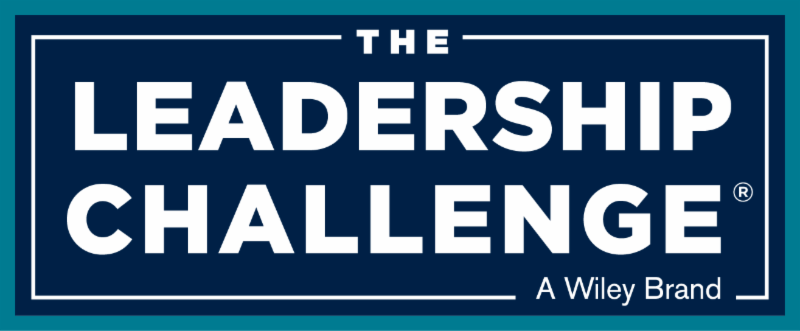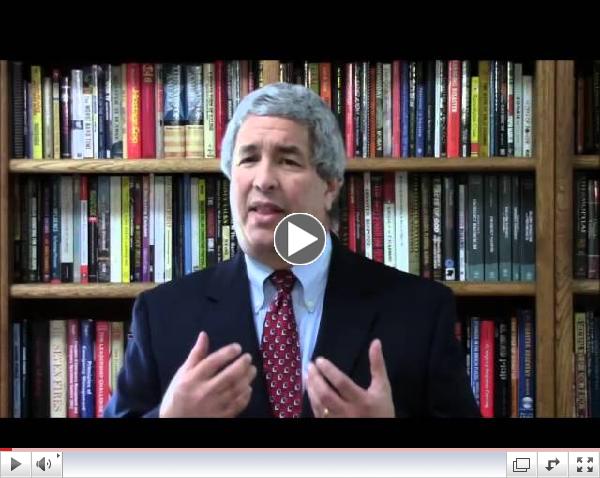This short clip taken from a helicopter gives an idea of the devastation caused by the recent fires in Northern California. This is one of many neighborhoods completely destroyed by the fires. The focus now is on recovery which will take years. We're still assessing damage to the wine industry and there will be serious impacts to the Bay Area housing market and to the regional economy.
|
The following are excerpts from my blog
Canton on Emergency Management. Please visit my blog to see the rest of my articles.
In our haste to help disaster victims we can easily become part of the problem or the victim of fraud.
|

What Is The Leadership Challenge?
 Is leadership a learned behavior or an innate personality trait? While there are certainly naturally charismatic individuals who are considered "born leaders", leadership is a measurable set of behaviors that can be learned and taught. This is the conclusion arrived at by researchers Jim Kouzes and Barry Posner after years of rigorous research. Starting in 1982, Kouzes and Posner set out to understand what happened when leaders performed at their personal best. They conducted hundreds of interviews and reviewed hundreds of cases studies and survey questionnaires. What emerged were five fundamental practices common to extraordinary leadership achievements:
- Model the Way
- Inspire a Shared Vision
- Challenge the Process
- Enable Others to Act
- Encourage the Heart
The Leadership Challenge begins with a 360-degree assessment of thirty leadership behaviors associated with the five practices, the Leadership Practices Inventory. The results are used to identify opportunities for improving as a leader by increasing the frequency of specific behaviors. Based on over thirty years of research, the Leadership Challenge is an effective and practical tool for leadership development.
To find out more about the
Five Practices of Exemplary Leadership
, consider taking
The Leadership Challenge
. Just click on the icon below for more information:
|
|
| Click here to take The Leadership Challenge |
____________________________________
The Leadership Challenge: How to Make Extraordinary Things Happen in Organizations
by James M. Kouzes & Barry Posner
_______________________________
The Leadership Challenge is a registered trademark of John Wiley &
Sons, Inc.
|
Free Resource Guide for Solo Consultants
For solo consultants, true wealth is discretionary time. Don't waste yours on simple tasks that can be handled by technology. This free resource guide reveals the four essential online tools I use to manage my solo consulting practice and save hours of valuable time. And the best part is - they're free!
 Interested in exploring the world of consulting? My membership site might be just the resource you need to get started. You'll have access to blogs designed to answer very specific questions, a resource library of templates and articles, the opportunity to network with peers, and discounts on coaching and training programs. Download the free guide or click on the logo above to go straight to the site.
Interested in exploring the world of consulting? My membership site might be just the resource you need to get started. You'll have access to blogs designed to answer very specific questions, a resource library of templates and articles, the opportunity to network with peers, and discounts on coaching and training programs. Download the free guide or click on the logo above to go straight to the site.
|
 |
| My Website |


M
y Blogs
Follow Me
 |
|
Archive
|
|
|

Welcome to the October edition of Emergency Management Solutions.
Last month I wrote that while September was an incredibly bad month for disasters but more was yet to come. I had no idea how prophetic those words would turn out to be.
I was on a long weekend vacation when I got the word about the fires in the North Bay. A friend had called home and received the news about the fires. Her family's vineyard was threatened and they had all been evacuated to safety. It put a very personal spin on the fire as did my wife's work evacuating several nursing homes and contacts with the many friends I have in the area.
We sometimes forgot that disasters are about people. It's a natural defense mechanism in our profession; it's tough doing our job if we're too closely involved. But the many stories of courage coming out of the fires are a reminder that it's ordinary people working together, coupled with the dedication of our first responders that saves lives.
Regards,
|
|
_________________________________________________
Catastrophic Events
Can We Really Plan for Them?
|
|
|
The past two months have seen four major disasters in the United States, several of which could be classified as catastrophic because of the severe effect on a large number of victims.
The problem is we don't always distinguish between disasters and catastrophes. There is a subtle difference that may not always be apparent but failing to recognize this difference can affect our response.
_______________________
________
If you are having trouble viewing my featured article, try clicking on the link at the top of the page. You can always find my articles in the white paper section of my blog site,
Canton on Emergency Management.
|
|
NIMS "Refresh" Now Available
I remember a time when we called the latest changes to doctrine as,well, a change. We did occasionally use "update" or a number. But "refresh" is a new one on me. Doctrine can become dated, but I never thought of it as going stale.
Nevertheless, FEMA has issued it's long awaited "refresh" to the
National Incident Management System (NIMS). According to FEMA,
"The refreshed NIMS retains key concepts and principles from the 2004 and 2008 versions, while incorporating lessons learned from exercises and real-world incidents, best practices, and changes in national policy."
The draft of the refresh was, to say the least, controversial, particularly its attempt to create a new operating structure for the Emergency Operations Center. However, FEMA was responsive to numerous comments and has dropped the concept. The EOC section still has flaws and does not include the Emergency Support Function concept common to many EOC's but it is flexible and does not impose any organizational restructuring.
One concept that was retained is the relegation of the Multi-Agency Coordination Group (MACS) to the role of policy group. I have long argued that the Multi-Agency Coordination System, to give MACS it's proper name is better descriptive of the role of an EOC that is not functioning as an Area Command.
I have not had time to digest the whole document, so these are only my first impressions and there's more to come. Meanwhile, I recommend an article by colleague, Tim Rieker,
The NIMS Refresh, aka NIMS 3.0. He offers some good insight on the new document. By the way, if you're not reading his blog
Exploring Emergency Management and Homeland Security, you should be.
FEMA is also offering
free webinars on the "refreshed" doctrine through December.
Professional Development Opportunities
FEMA is hosting a series of webinars to provide information on the recently released National Incident Management System (NIMS) refresh.
N
ovember 10-15, 2017
Long Beach, California
The goal of the IAEM Annual Conference is to improve your knowledge, competency level and collaborative skills. IAEM attracts high-profile speakers to address current topics and practical solutions. The conference draws exhibitors who are the top suppliers to the fields of disaster preparedness and homeland security.
|
|
|
Decluttering
Having served in the military, I tend to be fairly organized. It also helps that by nature I am a planner and tend to organize things. I won't say, however, that i'm a neat freak - the universe moves towards entropy and my life is no different. Besides, there's this classic photo of Einstein's desk on the day he died:
Nevertheless, I find a great deal of satisfaction when I can take a few minutes to organize my personal space, whether it is my desk or my work bench or the entire man cave. It gives me a sense of control and tends to make me a bit more efficient. I also find things I may have forgotten to deal with.
Like many of us, I have too much stuff, particularly reference books and materials. Organizing this mess is not something I think I'll ever get around to doing. But there are a few things you can do:
- If you haven't touched it is awhile, it's probably safe to pitch. Of course, what ever you get rid of will be the thing you need for your next project.
- If you haven't read it by now, you probably never will. Donate it to a book sale or the local library. Sam thing applies as in #1, of course.
- Don't sort everything at once; do small bits at a time.
- Have a general space where things of the same type get tossed.
I was once in a mandatory training class on some touchy-feely subject that I can't recall. However, I do recall on statement that the instructor made, "If you want to change the world, start by cleaning out your closet." I might get around to that someday...
|
Firestorm at Peshtigo: A Town, Its People, and the Deadliest Fire in American History
By Denise Gess and William Lutz
In our study of disasters we frequently become focused on the statistics of an event. In our rush to understand the big picture, we sometimes forget that disasters are ultimately about people.
The conflagration at centered on Peshtigo, Wisconsin, on October 8, 1971 is often overshadowed by the Great Chicago Fire that began on the same day. However, the Peshtigo fire is considered the most deadly wildfire in history, with anywhere from 1.500 to 2,500 estimated dead. By contrast, 300 were killed in Chicago.
Gess and Lutz spend a good portion of the book on the history of Peshtigo and a number of inhabitants. While a bit lengthy, this introduction helps to explain the conditions that would lead to catastrophe. Like many such events, there is an element of denial. The effects of drought and the logging industry created an immense fuel load and fires were common and had in fact been burning for months prior to the conflagration. Several major fires had threatened the town the two major towns just weeks before.
As is common to these types of books, the description of relief operations is not as detailed as an emergency manager might wish but it does point out the conflicts that can arise when one is faced with two events, one of which eclipses the other in significance.
In view of the devastation in Northern California, the story of the Peshtigo fire is both timely and relevant.

|
|

Emergency Management: Concepts and Strategies for Effective Programs
by Lucien G. Canton

|
|
Need a speaker for your next conference? I offer keynotes, seminars and workshops.
 |
|
Three Reasons Why I'm the Right Speaker for Your Conference
|
|
|
Speaking Engagements
Collaborative Sheltering: The San Francisco Experience
International Association
N
ovember 10-15, 2017
Long Beach, California
|
|
| |
|